Staring at the Tamsui waterfront from a hill, all I can see is a never-ending sea of people. I get that people here like crowds, but it’s still a bit perplexing that my friend and I are the only people on this narrow, winding stone-paved path. With the noise blocked off by the buildings and trees, it’s completely quiet, making it even harder to believe that this is just two streets away from the chaos below.
I’ve been to Tamsui countless times since high school, but somehow every time I would simply follow the crowds from the MRT station and dive straight into Tamsui Old Street (淡水老街), which is lined with shops, stalls and performers. I was a bit embarrassed when I spoke to a granddaughter of a former British consul in Tamsui and admitted that I had never visited any of the historic sites there.
AWAY FROM CROWDS

Photo: Han Cheung, Taipei Times
On a fine Sunday afternoon, I visited Tamsui again but head in a totally different direction from the usual route. Exiting the MRT, I follow the tourist-laden Zhongzheng Road (中正路) until I make a right at alley 129 and walk up a hill to Chingshui Temple (清水巖). Miraculously all the tourists have disappeared. From here, there are a series of steep footpaths that take visitors through crumbling old brick houses and overgrown greenery.
The paths eventually lead to Zhongjian Street (重建街), a picturesque sloped path with some interesting shops, including Herbs Maison, housed in a 100-year-old residence and holds various herb workshops and historical tours. There’s a quaint alley surrounded by abandoned buildings dubbed Love Lane (戀愛巷). According to local lore, Tamsui doctor and writer Wang Chang-hsiung (王昶雄) would pass through this alley when walking home his future wife Lin Yu-chu (林玉珠). With its cute decorations, all signs point to a tourist draw tailored for selfies, but it is pretty and there are still few people around.
Don’t rush to the main street just yet, because there are some more narrow alleys to explore here. Most don’t really take you anywhere, but there’s a certain charm to them. Chungjian Street ends at Wenhua Road (文化路), the main thoroughfare for this area. At the intersection I see a poster for a cultural tour of Tamsui’s public bathrooms organized by the Taiwan Toilet Association (台灣衛浴文化協會), that runs until Tuesday.
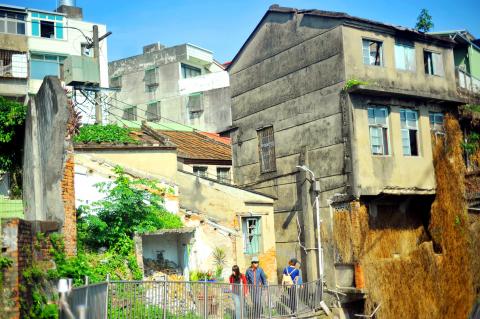
Photo: Han Cheung, Taipei Times
I cross the road and walk up Chenli Street (真理街), another hardy slope, and pass two shops that both claim to be the original stores selling agei (阿給), or fried tofu stuffed with glass noodles and sealed with fish paste. I make a u-turn and walk down another pleasant, stone-paved path to the former residence of Tada Eikichi, mayor of Tamsui from 1930 to 1933. It’s a renovated traditional Japanese house that sits in a large, beautiful garden. Part of the charm is that it’s entirely open-air, with all windows and doors ajar.
PLENTY FOR HISTORY BUFFS
I follow the path along the residence walls, lined with red brick and greenery. It is the last moment of solitude for the time being, as the next area is swarmed with South Korean tourists. Apparently, the movie Secret (不能說的秘密) starring Jay Chou (周杰倫) was filmed here at Aletheia University (真理大學). Somehow it was a huge hit with the Koreans and they flock here en masse to see the school grounds containing buildings that are a hybrid of Western and local styles.
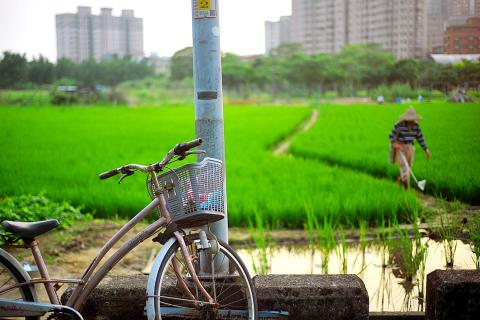
Photo: Han Cheung, Taipei Times
Before entering the university, I check out the residence of the former tax division customs during the Qing Dynasty, also known as the Little White House (小白宮). The verandas with white columns are great for photos, but it was crowded and I quickly left. Aletheia University is a joy to walk through, as picturesque scenes abound. University founder and famous missionary George Leslie Mackay’s former residence is located here, and has only been open to the public since May of last year. Unfortunately, it’s closed on Sundays, but it’s possible to find an isolated corner on the veranda and enjoy a moment of reflection surrounded by white columns, white walls and white doors.
The next destination is Fort San Domingo and the adjacent former British Consular Residence, two famous historical sites in Tamsui that require no introduction. But at least, as a history buff, I won’t feel embarrassed about never visiting these sites anymore.
Continuing down Zhongzheng Road, I visit the Drop of Water Memorial (一滴水紀念館), a traditional Japanese house that was moved from Japan to Taiwan over five years as a symbol of the friendship between the two countries. It wasn’t very spectacular as far as Japanese residences in Taiwan go. Nearby is Hobe Fort (滬尾砲台). I’m a big fan of visiting historical forts, and this is by far the most complete experience as the fort is pretty much intact. The route takes visitors through the various tunnels to the top of the fort and back inside, and the entire structure is explorable. It’s almost like a castle, and I could have probably spent hours here if I didn’t arrive half hour before closing.
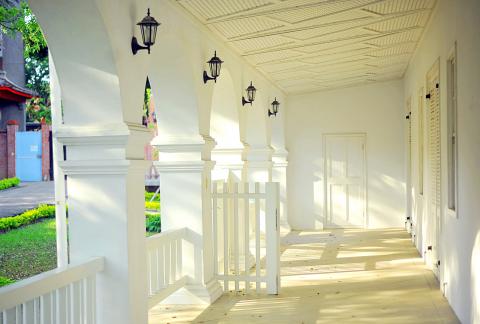
Photo: Han Cheung, Taipei Times
For those who still have energy after walking this far, there’s a final treat waiting further down Zhongzheng Road that I discovered by accident. On a whim, I hung a right at alley 22, only to discover a sleepy, somewhat decaying residential neighborhood that looks like it belongs to another era. The cement houses abruptly end after a few minutes of walking, revealing an expanse of lush rice paddies. I followed a path into the greenery along a small canal, which was dotted with old folks tending to their vegetable plots. A few dogs and scooters buzz by, and there’s a couple taking wedding photos in the middle of the field. I watch the sunset here, and I forget that the massive crowds are still just a couple blocks away.
If you go:
Tada Eikichi Residence
19 Mackay St, New Taipei City (新北市馬偕街19號)
Open 9:30am to 5pm weekdays, 9:30am to 6pm weekends, free admission
George Leslie Mackay Residence
2, Ln 4, Chenli St, New Taipei City (新北市真理街4巷2號)
Open 10am to 4pm Tuesday to Saturday, free admission
Hobe Fort
34, Ln 6, Zhongzheng Rd Sec 1, New Taipei City (新北市中正路一段6巷34號)
Open 9:30am to 5pm weekdays, 9:30am to 6pm weekends, admission is NT$80 (includes entry to Fort San Domingo and the Little White House)
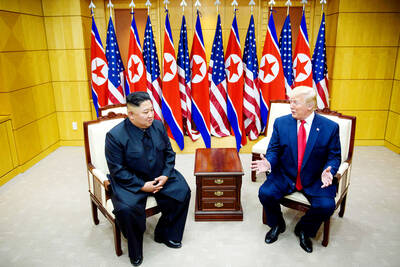
US President Donald Trump may have hoped for an impromptu talk with his old friend Kim Jong-un during a recent trip to Asia, but analysts say the increasingly emboldened North Korean despot had few good reasons to join the photo-op. Trump sent repeated overtures to Kim during his barnstorming tour of Asia, saying he was “100 percent” open to a meeting and even bucking decades of US policy by conceding that North Korea was “sort of a nuclear power.” But Pyongyang kept mum on the invitation, instead firing off missiles and sending its foreign minister to Russia and Belarus, with whom it
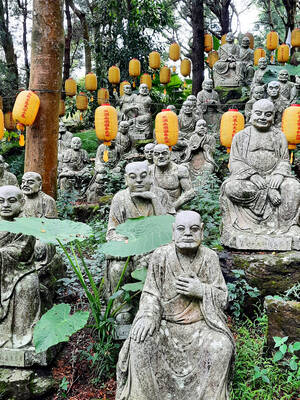
When Taiwan was battered by storms this summer, the only crumb of comfort I could take was knowing that some advice I’d drafted several weeks earlier had been correct. Regarding the Southern Cross-Island Highway (南橫公路), a spectacular high-elevation route connecting Taiwan’s southwest with the country’s southeast, I’d written: “The precarious existence of this road cannot be overstated; those hoping to drive or ride all the way across should have a backup plan.” As this article was going to press, the middle section of the highway, between Meishankou (梅山口) in Kaohsiung and Siangyang (向陽) in Taitung County, was still closed to outsiders

President William Lai (賴清德) has championed Taiwan as an “AI Island” — an artificial intelligence (AI) hub powering the global tech economy. But without major shifts in talent, funding and strategic direction, this vision risks becoming a static fortress: indispensable, yet immobile and vulnerable. It’s time to reframe Taiwan’s ambition. Time to move from a resource-rich AI island to an AI Armada. Why change metaphors? Because choosing the right metaphor shapes both understanding and strategy. The “AI Island” frames our national ambition as a static fortress that, while valuable, is still vulnerable and reactive. Shifting our metaphor to an “AI Armada”
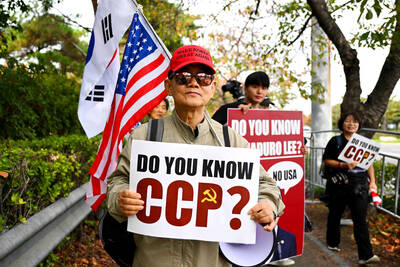
The Chinese Communist Party (CCP) has a dystopian, radical and dangerous conception of itself. Few are aware of this very fundamental difference between how they view power and how the rest of the world does. Even those of us who have lived in China sometimes fall back into the trap of viewing it through the lens of the power relationships common throughout the rest of the world, instead of understanding the CCP as it conceives of itself. Broadly speaking, the concepts of the people, race, culture, civilization, nation, government and religion are separate, though often overlapping and intertwined. A government